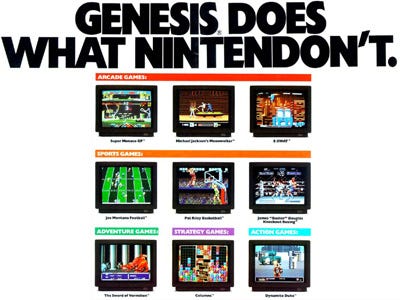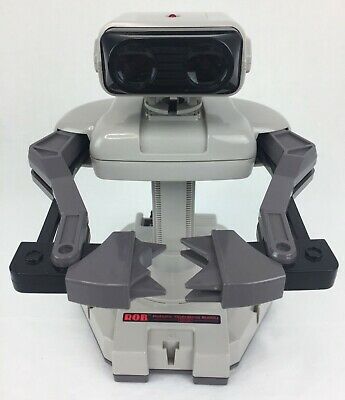
What a time to be alive. The advancements of technology in the 1980s ushered in a whole new era of video game wonder. For the first time, it was like we could bring the arcade home with us. But this begs the question: with all the new releases what is the best 1980s video game console?
As we went into the 80s, the Atari was starting to fade away (more on that in a second.) The period from 1983 to the early 90s was considered the third generation of consoles. But there is a fourth generation of video game consoles that come out in the late 80s–and I’ll cover that in a moment, too.
This is tough to narrow down because there is the bias of each of us based on our experiences with the different systems. I didn’t have access to them all, but what I’m going to do is list out the best 1980s video game console.
The Best 1980s Video Game Console
#1. The Nintendo Entertainment System
Let’s just get this out of the way right now. If you were a video game developer, or tester, in the 1980s, you would have had access to every console under the sun. There are so many that were probably better, but they weren’t available for the general public. With the NES, you got a groundbreaking new console that changed the trajectory of video games forever.
It’s important to start with the NES for this reason, and also for the fact it helped save an industry. You’ll need to read my article all about the great video game crash of 1983, but here’s the quick rundown.
Atari ruled the roost going into the 80s, and it looked like they would be on top forever. But they got complacent. And maybe a bit cocky. There were no standards on the video games that could be released so third-party developers could put out any piece of crap they wanted. Atari didn’t care, they were making money hand over fist.
But the quality of these games were garbage, and the public was starting to lose faith in the company. And then E.T. came out. If you’re a fan of video game history, you already know this story as the backlash to the game was so severe that it nearly bankrupted Atari.
The truth is, this was already on the way to happening, but E.T. probably pushed it over the edge. The industry almost imploded overnight and stores–and toy companies–didn’t want anything to do with video games anymore.
Big companies like Hasbro and Mattel had started to invest in games but got so burned by the video game crash, they vowed to disassociate themselves forever.
Sounds like an awful time to put out a new console, doesn’t it? Well, you know the rest of the story. What had started as the Famicom in Japan, would become the Nintendo Entertainment System in North America. By 1986, the NES had completely revolutionized the video game market.
Home games were back in a big way, and there would be no looking back. Between the massive success of Super Mario Bros. and Duck Hunt, the NES ushered in the era of what video games could truly be.
I’ve got a lot more on the NES in these articles if you want to dive deeper:
- The story of Duck Hunt
- Did the Nintendo R.O.B. Help Save the Video Game Industry?
- The History of the Nintendo Entertainment System
- The Story of the Nintendo Power Glove
#2. Sega Master System
The Sega Genesis is part of the third generation of video game consoles because it uses 8-bit technology. This is the defining characteristic of that generation. The Sega Master System started out as a whole different video game console: The Sega Mark III.
It went by this name in Japan before it was released as the Sega Master System in North American in 1986. Sega and Nintendo were neck and neck during the third generation of consoles. Even if you hate Nintendo, it did dominate the decade.
The Master System was great, but I only knew one kid that had one. It seemed more of a piece of technology compared to the NES which seemed more like a toy–if that makes sense.
The other problem was the lack of available games for the Master System. Even though they used cool cartridges and the credit card-sized “Sega Cards,” there just weren’t that many titles available compared to the NES. The other problem is the games weren’t as well-reviewed.
Sega went with an aggressive $15 million marketing campaign to launch the Master System, and the hope was they would sell 400,000 to 750,000 consoles. They only sold 150,000. This was more than Atari was selling but far short of Nintendo’s 1.1 million consoles.
It looks like this thing is lackluster, but it really wasn’t. I would say the technology was ahead of its time, they just didn’t know how to market and package it as well as Nintendo. They also didn’t have a flagship game and character like Mario to be the face of the product.
But that would change with the launch of the Sega Genesis.
#3. Nintendo Game Boy
The Game Boy was late to the party coming in just before the decade ended in 1989. But it was a groundbreaking new console–if you can even technically call it a console? For the purposes of this article; we will because that was the whole idea with the Game Boy–it was like taking an NES console anywhere you went.
Even though it had a black and white screen, it didn’t matter: the essence of the NES was still there. You have had the familiar controller built right into it. The classic control pad had continued to be used ever since it had been introduced on the Nintendo Game and Watch years earlier. (check out my article all about the Game and Watch and why it may be the most important piece of video game tech, ever.)
The Game Boy was kind when it was released in July of 1989. The technology of course seems quaint now, but this thing caused a frenzy when it came out. It wasn’t a crappy handheld game, but a genuine video game console to take your games on the go.
Like any good console, a flagship game would be responsible for its success. And in the case of the Game Boy: that game was Tetris.
When the Game Boy was released, it sold 40,000 units its first day. It was then off and running to become the number one selling toy of 1989.
Check out my article on the other best-selling toys from 1980-1989 here.
#4. Sega Genesis

Sega would be first out of the gate when it came to new 16-bit technology. It was released in 1988 and the Super Nintendo wouldn’t come out for a full two years later in 1990. Some may say that being first to the line with 16-bit might not have been the ideal strategy. Even though Nintendo was late to the game, it gave them enough time to take the technology to the next level.
You could say that Sega learned from the mistakes they made with the Master System and applied their new knowledge to the Genesis. The one big thing they had going for them this time around, was a unique character to represent the console, and one of the greatest video game characters in history: Sonic the Hedgehog.
With the new 16-bit technology, the console now had the ability to display amazing graphics along with different features such as sprites, tiles, and scrolling. You probably remember seeing Sonic for the first time and being amazed at the scrolling backgrounds and gameplay.
Fun fact: Tonka was one of the first distributors of the Sega Master System, but that didn’t go so great. Sega then turned to Atari of all people to help launch it, but they declined. It was so hard to market against Nitnedo, and also due to the fact, there were rumors of a 16-bit Nintendo console coming soon, too.
They expected to sell a million units, but only sold 500,000. But the Genesis just needed time to grow. Due to the popularity of Sonic–and people realizing how great the Genesis was, even compared to the SNES–it actually outsold the SNES during the 1991 holiday season. For a short while, Sega controlled 65% of the 16-bit market.
#5. TurboGrafx-16/PC Engine
To me, the TurboGrafx-16 was the stuff of legend. It seemed like a video game console from the future, and only something rich kids could own. It technically predates the Sega Genesis for the 16-bit console as it was released in Japan in 1987. But it didn’t enter the North American market until 1989.
I think what gave this console some folklore is that no one had seen or played it. This seems like a smart marketing campaign to build mystique, but the marketing campaign was actually seen as a failure. The delayed release of the TurboGrafx-16 didn’t help matters and marketing became too difficult.
But here’s what I never knew about the TurboGrafx-16: It really wasn’t a 16-bit console. It was marketed as such but was technically an 8-bit CPU. The marketing, plus having the “16” in its name was seen as being deceptive.
The thing was, the PC engine–as it was known in Japan– was a monster hit. It was introduced earlier and still was better than 8-bit. When it debuted in Japan in 1987, it actually outsold the Famicom. But it just couldn’t’ cut it in North America.
They even put out an enhanced version not soon after called the PC Engine SuperGrafx. I have a slight memory of this, but it also didn’t catch on. The entire system would end up being discontinued in 1994.
The thing is, if they had launched a bit earlier, they could have been what Sega became. The TurboGrafx-16 was released two weeks after the Sega Genesis and it was too late to play catch up. Who knows what would have happened if they had launched a few months earlier.
To me, the TurboGraphx-16 is still somewhat of a mythical console. It seemed to be the high end of technology, but we now know it really wasn’t.
The Best-Selling Games of the 1980s
So, that’s the best 1980s video game console, but what were the best-selling games for those consoles? No surprise here, but Nintendo dominates the top-selling video games of the decade. Of the top ten best-selling video games, only one is not an NES game: and it belongs to Atari (you can probably guess which game it is).
- Super Mario Bros: 1985- 40.24 million units
- Tetris: 1984 – 30.25 million units
- Duck Hunt: 1984- 28.31 million units
- Super Mario Land: 1989- 18.37 million units
- Super Mario Bros 3: 1988- 17.28 million units
- Super Mario Bros 2: 1988- 7.46 million units
- Pac Man: 1982- 7 million units
- The Legend of Zelda: 1986 – 6.51 million units
- Zelda II: The Adventure of Link: 1987 – 4.38 million
- Excitebike: 1984 – 4.16 million units
The one thing to note here is regarding Tetris. It did come out in 1984 and was available on every platform imaginable, but it was the launch of the GameBoy in 1989 that put Tetris into the stratosphere when it came to sales.



